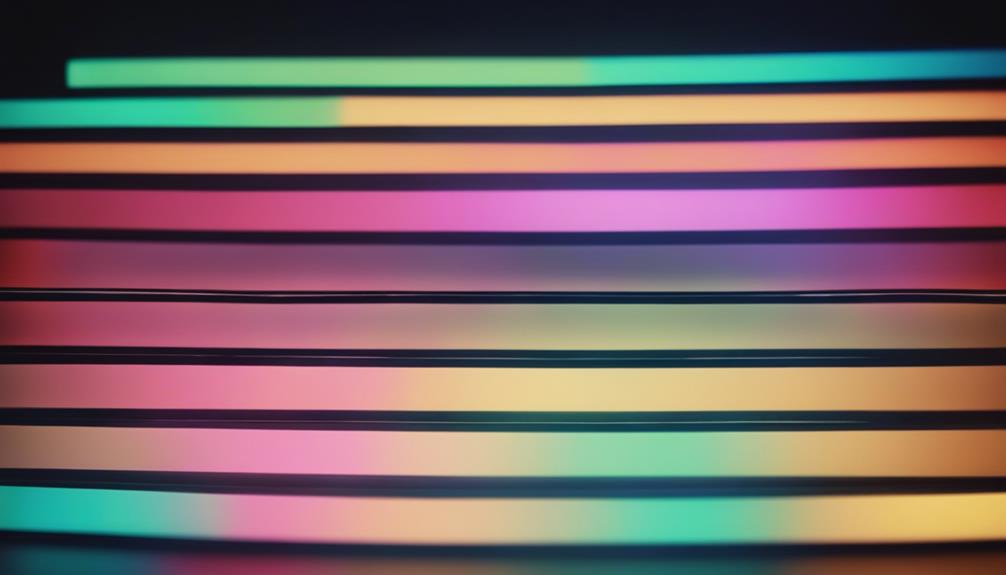LED wattage plays a crucial role in determining power consumption and brightness in LED lights. It directly affects energy efficiency and the level of light intensity in a given space. The size of the room and the desired brightness are key factors in selecting the most suitable wattage. For indoor lighting, LED bulbs typically range from 4.5W to 8.5W, striking a balance between brightness and energy efficiency. Outdoor LED flood lights are also available in different wattages to cater to various coverage areas. LED lights provide customizable and energy-efficient lighting solutions, underlining the significance of wattage selection. A solid grasp of these fundamentals is essential for achieving optimal lighting in any environment.
Key Takeaways
- LED wattage crucial for energy efficiency and power consumption balance.
- Consider room size and desired brightness for optimal LED wattage selection.
- Wattage varies based on area size for proper illumination coverage.
- LED bulbs with 4.5W to 8.5W recommended for indoor lighting needs.
- Seek professional guidance for correct wattage selection for outdoor lighting.
Understanding LED Wattage Basics
LED wattage serves as an important indicator of power consumption rather than brightness level, a fundamental concept to grasp when considering lighting options. In the domain of LED lighting, wattage plays a vital role in determining the energy efficiency of the bulbs. Unlike traditional incandescent bulbs, where higher wattage often equates to greater brightness, LED technology operates differently. Lower wattage LED bulbs can produce the same or even more light output compared to their higher wattage incandescent counterparts, showcasing the efficiency of LED lighting.
When choosing the best LED wattage for a particular space, individuals must consider factors such as energy efficiency, desired brightness, and the size of the area needing illumination. LED technology typically ranges from 5 to 20 watts for residential lighting applications. Higher wattage LEDs are better suited for larger spaces or areas that require intense illumination, while lower wattage options are ideal for smaller rooms or ambient lighting needs. By understanding the basics of LED wattage, individuals can make informed decisions to achieve excellent lighting solutions.
Importance of Wattage in LED Lighting
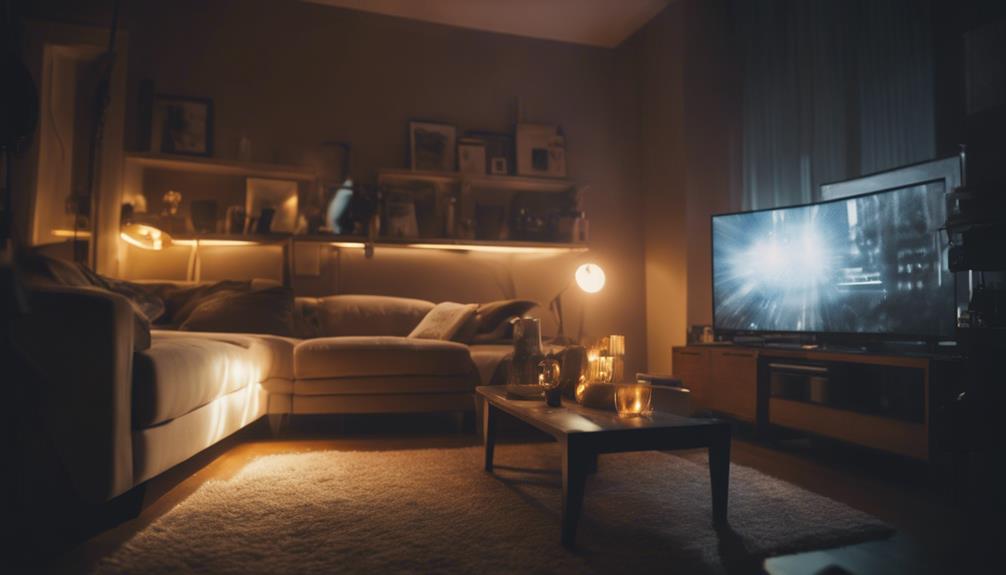
Understanding how wattage influences LED lighting is essential for making informed decisions about energy consumption and brightness levels. In LED technology, the wattage of a light bulb directly impacts its power usage and the intensity of the light it emits.
Generally, higher wattage LED lights consume more energy but produce a brighter light output, which can be beneficial in spaces requiring ample illumination. However, lower wattage LED lights have also become increasingly popular due to advancements in efficiency within LED technology. These lower wattage options are capable of providing sufficient brightness for various lighting needs while consuming less energy.
When selecting an LED bulb, considering the relationship between wattage and lumens is important in achieving the desired level of brightness without unnecessary energy consumption. LED technology's efficiency has paved the way for the availability of lower wattage bulbs that can offer suitable illumination, making it important to balance energy efficiency with the brightness required for a specific application.
Factors Affecting Optimal LED Wattage

Room size and desired brightness levels play a significant role in determining the best wattage for LED lights.
Considering factors like light intensity, room dimensions, and energy efficiency impact the choice of wattage for achieving the desired lighting conditions.
It's essential to balance these factors to guarantee both adequate illumination and energy savings in various indoor and outdoor settings.
Light Intensity Factors
Factors influencing the best wattage for LED lights include the size of the illuminated area and the desired level of brightness. Light intensity factors play a significant role in determining the most suitable LED wattage for effective lighting. Desired brightness levels also factor into the decision-making process, ensuring that the chosen wattage meets the specific lighting requirements.
Energy efficiency considerations are important when selecting LED wattage, as lower wattage options can provide higher light output while reducing energy consumption. Consulting with a professional lighting designer can help tailor the LED wattage to specific applications, ensuring excellent performance and efficiency.
Room Size Consideration
Considering the size of a room directly impacts the most suitable LED wattage required for adequate lighting coverage. Larger rooms generally necessitate higher wattage LED bulbs to guarantee ample brightness throughout the space.
On the other hand, smaller rooms may only need lower wattage LED bulbs to deliver the appropriate level of illumination. It's essential to take into account the layout and purpose of the room when determining the ideal LED wattage for effective lighting.
Energy Efficiency Impact
Larger rooms may require higher wattage LED bulbs to guarantee sufficient brightness, considering the energy efficiency benefits of LED lights compared to traditional lighting sources. LED lights have a higher energy conversion rate, reducing energy consumption. The design of LED lights minimizes heat production, enhancing safety and durability. LED lights require minimal maintenance and offer a longer lifespan, contributing to their energy efficiency impact. When choosing the optimal LED wattage, factors like desired brightness level, energy consumption, and specific application should be considered. LED lights provide a range of wattages, allowing for customized energy-efficient lighting solutions.
- LED lights have a higher energy conversion rate, leading to greater energy efficiency compared to traditional lights.
- The design of LED lights reduces heat production, making them safer and more durable for long-term use.
- LED lights require minimal maintenance and have a longer lifespan, contributing to their energy efficiency impact.
- LED lights offer a range of wattages to suit different needs, allowing for customized energy-efficient lighting solutions.
Calculating Wattage for Specific Areas

When determining the wattage needed for specific areas, it's important to take into account the size of the space and the desired lighting intensity. Different areas, such as small, medium, large, and extra-large spaces, require varying wattages to achieve ideal illumination levels.
Area Size Considerations
Efficiency in lighting can be achieved by calculating the appropriate wattage based on the specific size of the area. When considering LED lights for different area sizes, the wattage plays a vital role in achieving ideal illumination and brightness.
Here are some key considerations for wattage based on area size:
- For small areas up to 300 sq ft, LED lights ranging from 10-30 watts can provide the desired brightness.
- Medium-sized areas of 300-600 sq ft may require LED lights with wattages between 50-100 watts for adequate illumination.
- Larger spaces spanning 600-1,000 sq ft might benefit from LED lights with wattages in the range of 150-300 watts to ensure proper lighting coverage.
- Extra-large areas over 1,000 sq ft may need high-wattage LED lights exceeding 300 watts, with professional advice recommended.
Lighting Intensity Needs
To accurately determine the required wattage for specific areas, it's important to assess the lighting intensity needs first. Different sized spaces demand varying levels of illumination.
Small areas up to 300 sq ft typically require 10-30 watts of LED lighting to meet their lighting needs effectively.
Medium-sized areas spanning 300-600 sq ft may necessitate 50-100 watts for best lighting intensity.
Larger areas between 600-1,000 sq ft often benefit from 150-300 watts of LED lighting to guarantee sufficient brightness.
For high-wattage applications exceeding 1,000 sq ft, consulting with a professional lighting designer is recommended to determine the most appropriate wattage and lighting setup.
Customizing the wattage to match the lighting intensity requirements of specific areas is essential for achieving the desired illumination levels.
Wattage Recommendations for Indoor Lighting
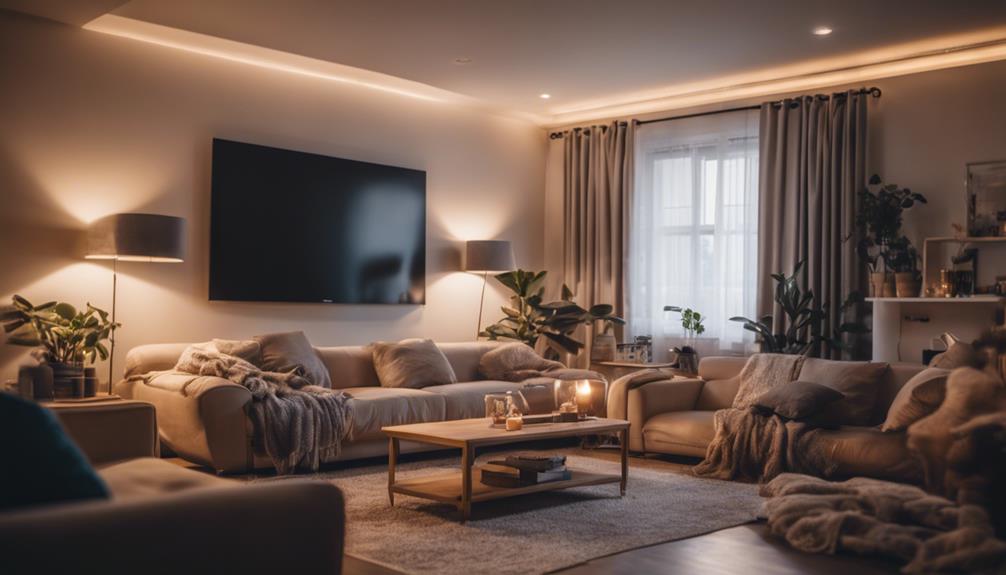
Considering indoor lighting needs, LED bulbs with wattages between 4.5W and 8.5W offer a range of brightness levels to suit various preferences and energy efficiency goals. These wattage recommendations cater to different lighting requirements indoors, balancing luminosity and power consumption effectively.
When selecting LED bulbs for indoor spaces, it's essential to take into account factors such as desired brightness, energy savings, and longevity. Here are some key points to keep in mind:
- Opt for LED bulbs like the Sylvania GU10 with 4.5W and 345 lumens for energy-efficient lighting lasting up to 15,000 hours.
- Explore options like the Energizer GU10 with 5.5W or the Osram GU10 with 8.3W for varying levels of brightness and energy conservation.
- For increased brightness and an extended lifespan of 30,000 hours, higher wattage LED bulbs such as the Prolite GLS with 8.5W and 806 lumens are ideal.
- Wattage considerations play an important role in achieving ideal brightness and energy efficiency with LED bulbs for indoor lighting setups.
Wattage Recommendations for Outdoor Lighting

LED outdoor flood lights demand specific wattages depending on the coverage area to guarantee ideal illumination. For small coverage areas up to 300 sq ft, it's recommended to use LED outdoor flood lights with wattages between 10-30 watts.
In medium coverage areas spanning 300-600 sq ft, opting for LED flood lights ranging from 50-100 watts ensures maximum brightness.
When illuminating large coverage areas of 600-1,000 sq ft, LED flood lights with wattages between 150-300 watts are best.
For extra-large coverage areas exceeding 1,000 sq ft, high-wattage LED flood lights ranging from 300 watts to 1000+ watts may be necessary to provide sufficient brightness.
It's advisable to seek guidance from a professional lighting designer, especially for high-wattage scenarios, to guarantee the correct wattage selection for specific outdoor lighting needs.
Energy Efficiency Considerations for Wattage
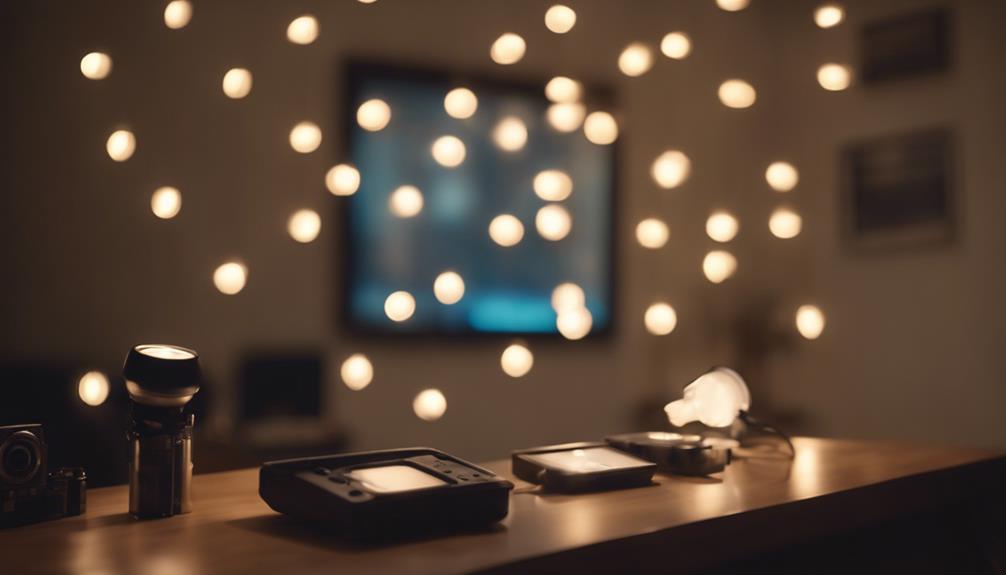
For maximum energy efficiency when selecting wattage for LED lights, it's essential to take into account the balance between brightness requirements and consumption levels. When considering the energy efficiency of LED bulbs, several key factors come into play:
- LED bulbs: These bulbs use notably less wattage compared to traditional incandescent bulbs, making them more energy-efficient.
- Energy consumption: Wattage directly impacts energy consumption, so choosing the right wattage is vital to keeping operating costs low.
- Operating costs: Higher wattage LED lights may offer more brightness, but they can also increase energy consumption, leading to higher operating costs.
- Brightness needs: It's important to balance the desired level of brightness with the energy efficiency goals to optimize the lighting solution.
Wattage Comparison: LED Vs. Traditional Lights
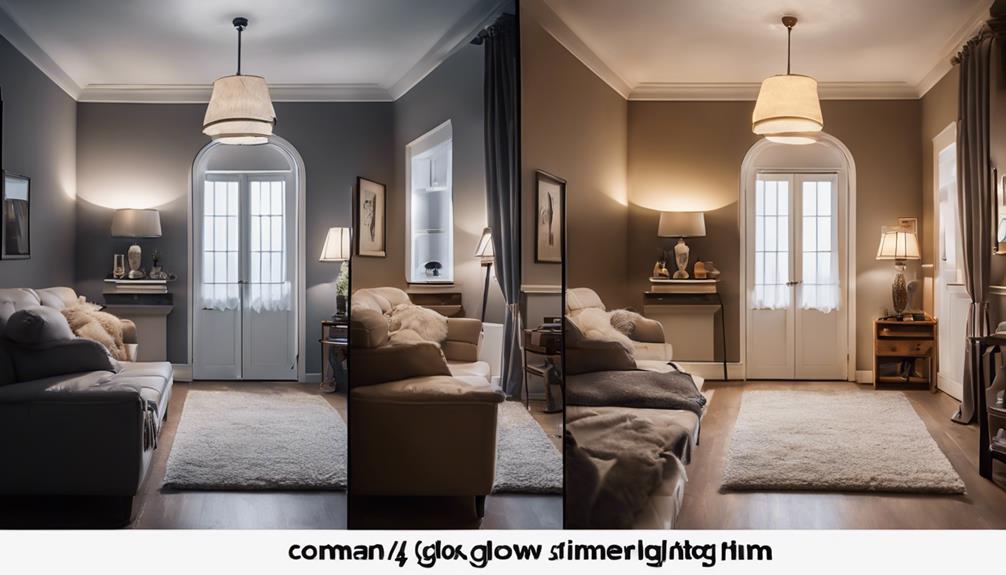
When comparing wattage between LED lights and traditional bulbs, the energy efficiency of LEDs becomes evident through their markedly lower power consumption. LED light bulbs use significantly lower wattage than traditional incandescent lights while providing the same level of brightness.
For instance, a typical 60-watt incandescent bulb can be effectively replaced by a mere 10-watt LED bulb, highlighting the importance of LEDs. This lower wattage usage is a result of LED technology offering higher lumens per watt compared to traditional bulbs, allowing for more brightness with less energy consumption.
Shifting to LED lights not only results in brighter illumination but also leads to substantial energy savings and reduced electricity bills due to their lower wattage requirements. Understanding the wattage difference between LED and traditional lights is important for making informed decisions about energy-efficient lighting options.
LED lights clearly outshine traditional bulbs in energy efficiency and lower wattage consumption.
Professional Guidance for Wattage Selection
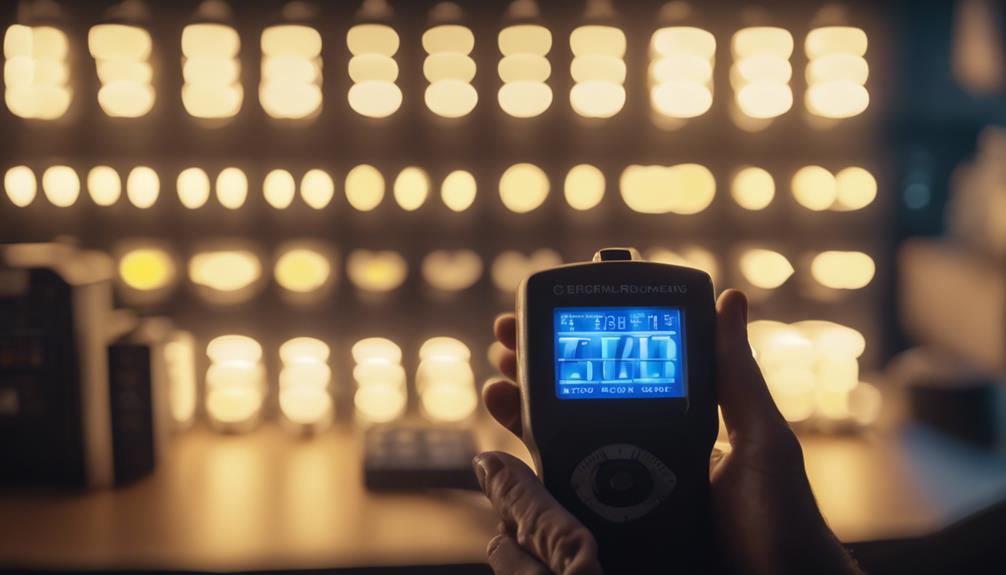
Considering the importance of achieving peak lighting performance, seeking guidance from a professional lighting designer is essential for selecting the right wattage tailored to your specific needs. Consulting with an expert in lighting design can provide invaluable insights into determining the best wattage for your LED lights. Here are some reasons why a consultation with a lighting designer is important:
- Professional guidance guarantees you achieve the ideal balance between energy efficiency and desired brightness levels.
- Tailored recommendations based on the size and layout of the area you need to illuminate can maximize the effectiveness of your lighting setup.
- Expert advice can help you select the appropriate wattage for LED lights, ensuring efficient energy consumption.
- Working with a lighting specialist can't only enhance the performance of your LED lighting but also lead to significant energy savings in the long run.
Frequently Asked Questions
What Is a Good Wattage for LED Lights?
When considering the question of 'what is a good wattage for LED lights,' individuals should assess room size, desired brightness levels, and energy efficiency goals.
LED bulbs typically require substantially fewer watts than incandescent bulbs, with equivalents often falling in the 8-10 watt range.
Understanding lumens and wattage equivalence is important for informed decisions. Energy-efficient LED options can vary from 4 watts for small spaces to over 20 watts for larger areas, offering a range of lighting solutions.
What Is the Best Wattage for Reading LED Lights?
When considering the best wattage for reading LED lights, a range of 10-20 watts is generally recommended for focused and comfortable reading experiences. This wattage range provides ample brightness without being overpowering, making it ideal for creating a cozy and well-lit reading environment.
Additionally, opting for LED lights with 500-1000 lumens can guarantee sufficient illumination for reading tasks while also helping to reduce eye strain.
Is Higher Watts Better for Led?
Higher watts in LED lights don't necessarily equate to better performance. LED technology is more efficient than traditional bulbs, offering higher lumens with lower wattage.
Best wattage depends on desired brightness and area to be lit. Choosing the right wattage can save energy and cut electricity costs.
Consider lumens, efficacy, and lighting needs when selecting the ideal wattage for LED lights.
What Happens if You Put a 60W LED Bulb in a 40W Socket?
Placing a 60W LED bulb in a 40W socket can lead to overheating and potential damage to the socket due to the higher wattage. The mismatch in wattage can cause connection issues and safety hazards, posing a fire risk and voiding warranties.
To guarantee safe operation, it's essential to match the LED bulb's wattage with the socket rating and follow the manufacturer's guidelines for compatibility.
Conclusion
In summary, selecting the ideal wattage for LED lights is essential for achieving the right balance between brightness and energy efficiency.
One interesting statistic to note is that LED lights consume up to 80% less energy than traditional incandescent bulbs, making them a cost-effective and environmentally friendly lighting option.
By considering factors like room size, desired light intensity, and energy savings, individuals can make informed decisions when choosing the right wattage for their LED lighting needs.
